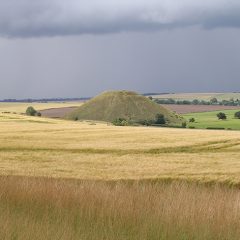AS REVEALED AT LE MANIO, CARNAC, BRITTANY.
The Heath Brother’s second survey report on Le Manio, in March 2010, has resulted in the first decent plan for the ‘Quadrilateral’ monument. From this comes valuable evidence suggesting the origin and length of the megalithic yard, showing it to result naturally from ‘day-inch’ counting of sun and moon cycles.
Were the archaeology profession ever to rekindle interest in why these massive monuments were built, this report would provide a major platform in providing sensible answers. For any study of the History of Science, this paper is a must-have bombshell, revealing unsuspected astronomical, geometrical and metrological skills from the prehistoric culture of Europe, prior to 4000 BC. [July 2011, PDF, 19 pages, 4.1 MB, free download]
CLICK HERE for The origin of the megalithic yard. [This is a large file. Allow time to download.]
ALSO:
FULL SURVEY REPORT OF LE MANIO March 2010
As a result of encouraging feedback and interest in the results from the Heath Bros recent survey of le Manio, the original survey data is now available as a PDF file, free, gratis and for nothing on the S&L website.
CLICK HERE for full survey report [Again allow time to download}
ALSO: ANOTHER NEW ARTICLE Sept 2011
SEPTEMBER 2011. LUNAR SIMULATORS AT LE MANIO.
This report began innocently enough as a diversion during our Spring 2010 survey (also available on this website). We noticed half a dozen symmetrical stones standing proud from the footpath near theQuadrilatere, at Le Manio. Arranged in a regular arc these stones were recorded and measured. This led to new and significant evidence of lunar astronomy having been practiced at this remarkable and virtually unknown site near Carnac, Brittany.
18 pages, free PDF download – 2MB.
CLICK HERE
